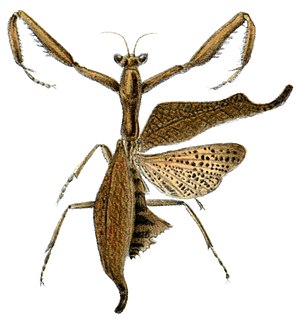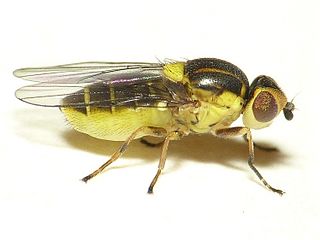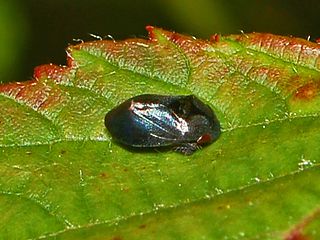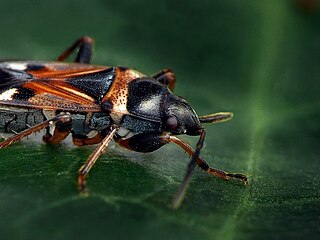 W
WAcanthops falcataria, common name South American dead leaf mantis, is a species of praying mantis in the family Acanthopidae. It is not to be confused with Acanthops falcata, a different species in the same genus that is often referred to with the same common name.
 W
WAdelphocoris lineolatus, is commonly known as the Lucerne bug or the alfalfa plant bug, and belongs to the family Miridae. It is an agricultural pest causing vast amounts of damage to numerous crops, but primarily to alfalfa crops around the globe.
 W
WChlorops pumilionis is a species of pest fly from the family Chloropidae. It is also known as the chloropid gout fly or barley gout fly. It is an oligophagous pest of cereal crops.
 W
WGonocerus acuteangulatus is a herbivorous species of true bug in the family Coreidae. It is commonly known as the box bug in the UK as it once only occurred in Box Hill in Surrey where it fed on box trees.
 W
WMelitaea didyma, the spotted fritillary or red-band fritillary, is a butterfly of the family Nymphalidae.
 W
WOncotylus viridiflavus is a species of plant bugs belonging to the family Miridae, subfamily Phylinae. It is found in every country of Central, south Europe and Scandinavia.
 W
WPenthimia nigra is a species of leafhoppers belonging to the family Cicadellidae subfamily Deltocephalinae.
 W
WPlatycleis albopunctata is a species in family Tettigoniidae; it is often called the grey bush cricket.
 W
WPolyspilota aeruginosa, common name Madagascan marbled mantis, is a species of praying mantis native to Africa. Adult females reach 8 centimetres (3.1 in) in length while males are smaller around 6 to 7 cm.
 W
WRaglius alboacuminatus is a species of dirt-colored seed bug in the family Rhyparochromidae. It is found in Africa, Europe & Northern Asia, and North America.
 W
WStictopleurus punctatonervosus is a species of scentless plant bugs belonging to the family Rhopalidae, subfamily Rhopalinae.
 W
WXylocopa olivacea is a species of carpenter bee. It has a completely yellow thorax and a yellow band on the first tergite. This species is very similar to X. calens, endemic to Madagascar. X. calens just differs in the length of the hair on the metasoma.